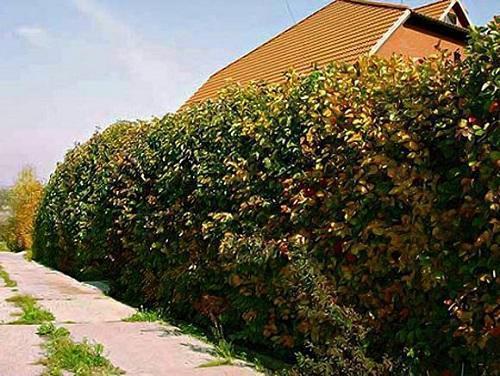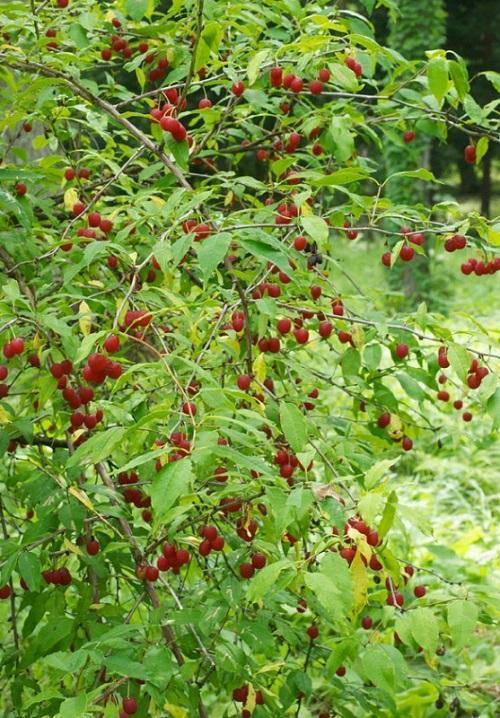We decorate and protect the site with a thorny hedge: how and what shrubs to use
 The owners of summer cottages have long appreciated the advantages of hedges, especially thorny ones. First of all, it looks very aesthetically pleasing, changing its appearance throughout the year. In spring, such a wall pleases the eye with green foliage, and some varieties of plants also have beautiful flowering. In autumn, the color of the deciduous head of the bushes changes to yellow-orange, and the inflorescences turn into fruits. What kind of fence is capable of this?
The owners of summer cottages have long appreciated the advantages of hedges, especially thorny ones. First of all, it looks very aesthetically pleasing, changing its appearance throughout the year. In spring, such a wall pleases the eye with green foliage, and some varieties of plants also have beautiful flowering. In autumn, the color of the deciduous head of the bushes changes to yellow-orange, and the inflorescences turn into fruits. What kind of fence is capable of this?
What can we say about the fact that the dense barbed wall becomes an insurmountable obstacle and reliably protects the site from unwanted guests. In addition, the shrubs provide the shade necessary in the summer heat, purify the air, strengthen the soil, and also prevent drafts.
Almost all thorny plants are unpretentious, they tolerate winter and drought well. With proper formation, a thick, impassable wall will grow from small young seedlings in a few years.
How to make a barbed fence?
It is quite clear that it will not be possible to grow a tall, real hedge in a year. This will take at least 3-4 years, but the result will exceed all expectations.
To get a dense wall, the seedlings must be planted in an even row, leaving no more than 20 cm between them.
Further formation of prickly hedges is as follows:
- in the first two years after planting, trim the bushes shortly to a height of 10 cm to stimulate branching, and also remove all weak branches, leaving the four strongest by the end of the season;
- from the third year, fix the young shoots on the trellis to form a dense lower part of the hedge;
- in the fourth year, give the shrubs the necessary general shape.
Since almost all plants in this group grow very quickly, they should be trimmed regularly to maintain the desired wall shape and prevent the bushes from going beyond their assigned space.
What to plant?
Most often, the following types of thorny shrubs are used for hard-to-reach hedges:
- Hawthorn prickly... A tall (up to 5 m) bush covered with many thorns, which are soft at first, and harden after the leaves fall. Blooms in late spring with red roses, and in August, red fruits ripen. It is able to maintain its shape without a haircut, but also lends itself well to shaping.

- Prinsepia is Chinese. Fast-growing edible shrub with arched branches (total height 2 m). Young shoots are green, and old branches are gray, with sparse thorns. Leaves, light green in summer, play with all shades of yellow in autumn. Blooms in the fifth year of life with small golden inflorescences, the fruits are round red balls, similar to cherries.

- Karagan Ussuri... Medium bush up to 1.5 m in height with erect bare shoots and dense small leaves. In May, it is covered with many bright yellow flowers, from which beans ripen in August.

- Thorn... A bush up to 3 m in height in mid-spring blooms with small white inflorescences, and only then bright green leaves appear. Round black and blue fruits ripen in September. Grows quickly, can be planted in partial shade.
